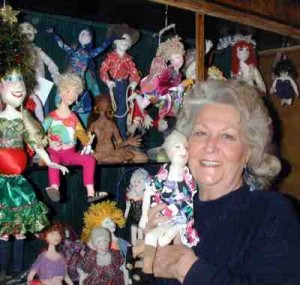Brief by Central Staff
Booze – April 2006 – Colorado Central Magazine
Colorado is sometimes credited with having more microbreweries per capita than any other state (there are about 150), and in recent years, wineries (about 40) have flourished in the Centennial State, especially in the Grand Junction area.
And now, distilled spirits are coming from Colorado with four licensed commercial distilleries that produce whiskey, brandy, and vodka.
The vodka comes from Palisade, and begins as Olathe sweet corn. The corn is mashed (allowed to sprout just a little, which converts the starches into sugars), then fermented (yeast turns the sugars into alcohol). The fermented liquid is then distilled, which concentrates the alcohol which boils off at a lower temperature than the water.
Near Hotchkiss on Redlands Mesa, the Peak Spirits Distillery is making organic brandy from local wines — it needs to be aged, so it won’t be available for another two years.
Altius Vodka is emerging from Colorado Springs, and in lower downtown Denver, Stranahan’s Colorado Whiskey should be emerging from aging barrels in April. It will be Colorado’s first legal whiskey in about 80 years.
Given that the state was full of thirsty miners in the early 20th century, along with farmers who were glad to sell to local markets, Colorado had a thriving alcohol industry. Then the reformers gained power, and in 1916 the state went dry — well before national Prohibition in 1919.
During Prohibition, moonshine stills operated in and around Leadville; by one account small kegs were shipped to Denver by dropping them into the water tanks on the tenders of narrow- gauge C&S locomotives.
It was also possible to get “medicinal alcohol” if one had a permit from the county, and Cloud City historian Ned Blair wrote that on that basis, “Lake County had the distinction of being the sickest county in Colorado based on comparative population.”
In more recent times, Colorado had three breweries until Denver’s Tivoli closed in 1969 and Pueblo’s Walter’s closed in 1975. That left only Coors, but by 1979, the state’s first micro- brewery was in business, operating on a goat farm near Hygiene, northwest of Boulder. Many have joined it since then.
As for distilled spirits, there have been proposals, off and on, to make scotch whisky in the San Luis Valley — scotch, like beer, starts as barley, and the Valley grows a lot of barley. But those Valley distilleries have been pipe dreams, so far.
A little farther south, there were small distilleries in the 1840s and ’50s. They converted the corn and wheat of northern New Mexico into “Taos Lightning,” a popular trade item of the day. Indeed, it was a staple at Denver’s first business establishment, opened in early 1859 by Dick Wooton, who had come to trade with the Arapaho there and was astonished to find a mining camp.
Even though Taos Lightning was popular and often mentioned in frontier accounts, we haven’t been able to learn much more about it, so we’d be pleased to hear from someone who knows more.
At any rate, Central Colorado currently makes beer and wine, and perhaps someday it will have a legal still or two.

